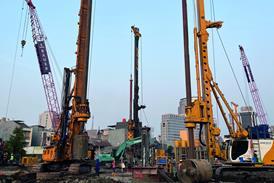It happened smack under the central terminal at the airport and only a whisker away from the busy Piccadilly underground line. The events were regarded as a criminal offence and Balfour pleaded guilty; it was ordered to pay a £1.2m fine and £100 000 court costs, all within 14 days. Geoconsult pleaded not guilty, was tried before a jury, found guilty and fined £500 000, payable at £50 000 a quarter; it also got £100 000 court costs, payable within 12 months. No one was killed or injured, but the judge said that that had been a matter of chance. The level of those fines contains a message. The days of being thumped for a few grand for health and safety breaches have gone.
A few months ago, there was another nasty but comparatively tiny case that influenced the crown court judge who sentenced Balfour and Geoconsult. It was the sort of case that is all too frequent, and can happen in everyday working activities, small or large. A young man working for F Howe & Son (Engineers) was using an industrial vacuum cleaner.1 Someone had fiddled with the tripping device; the lad was electrocuted, and died.
The company found itself prosecuted for failing to do everything reasonably practicable to keep him safe, was found guilty and fined. The company appealed, and the case reached the Court of Appeal.
Let me explain something here. Criminal cases go to a local magistrates court or, if more serious, to the crown court. Fines by magistrates for health and safety have a ceiling of £20 000 for breaches of general duties. Fines in the crown court are unlimited. It is rare that the very serious Court of Appeal deals with health and safety sentencing, but the F Howe case gave it that chance.
The court made it clear that, hitherto, health and safety fines had been too low and had caused concern. So, the appeal judges have given guidance on sentences. They have not set a tariff or formula. Instead, they have identified mitigating and aggravating factors to be considered when imposing fines.
The starting point seems to be to ask how far short the company fell in failing to take “reasonably practical steps to keep people safe”. If, in an electrocution case, the state of the electrical equipment was said to be appalling, or if there had been a flagrant disregard for the safety of employees, the case should go to the crown court. If death or serious injury resulted, the penalty should “compensate the level of public disquiet or loss of life”. The size of a company and its financial strength or weakness is not relevant; what matters is the degree of care that was required, the degree of risk, the extent of the danger created, and whether it was an isolated incident.
Those fines contain a message. The days of being thumped for a few grand for health and safety breaches have gone
Aggravating factors might be a failure to respond to warnings and whether safety had been compromised by a profit motive. The size of fine should to be large enough to send a message about the importance of safety to company bosses and shareholders.
Mitigating factors include a prompt admission of responsibility and a timely guilty plea. Also impressive are immediate steps to remedy deficiencies after they were drawn to the defendant’s attention. And, of course, a good safety record helps.
When dealing with health and safety cases, the accused company will almost always fight tooth and nail to defend itself, often doing so on the basis that “we have always done our work this way and very little goes wrong”.
But standards have galloped ahead. So, ask whether you could take better precautions – “practical steps to keep people safe”.
Next, the company will reach for its insurers. Have a quick look at your policy. The fine, almost certainly, is not covered; some policies even limit cover to prosecution costs. Push them to cover defence costs, too.
The Court of Appeal has sent a message to the lower courts about the low level of fines they impose. They will take notice. Avoid all this; take the practical steps instead.
Postscript
Tony Bingham is a barrister and arbitrator specialising in construction.



















